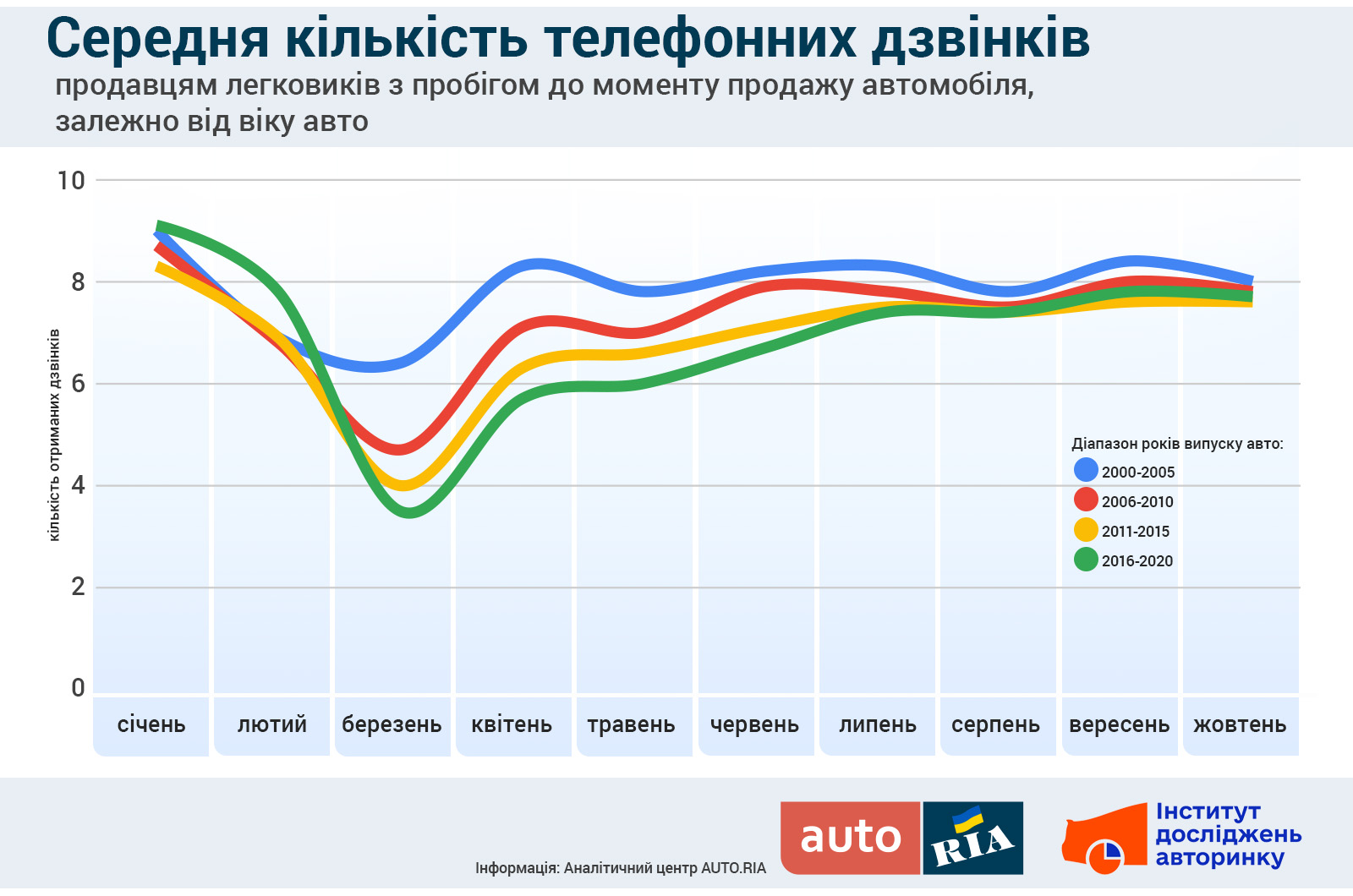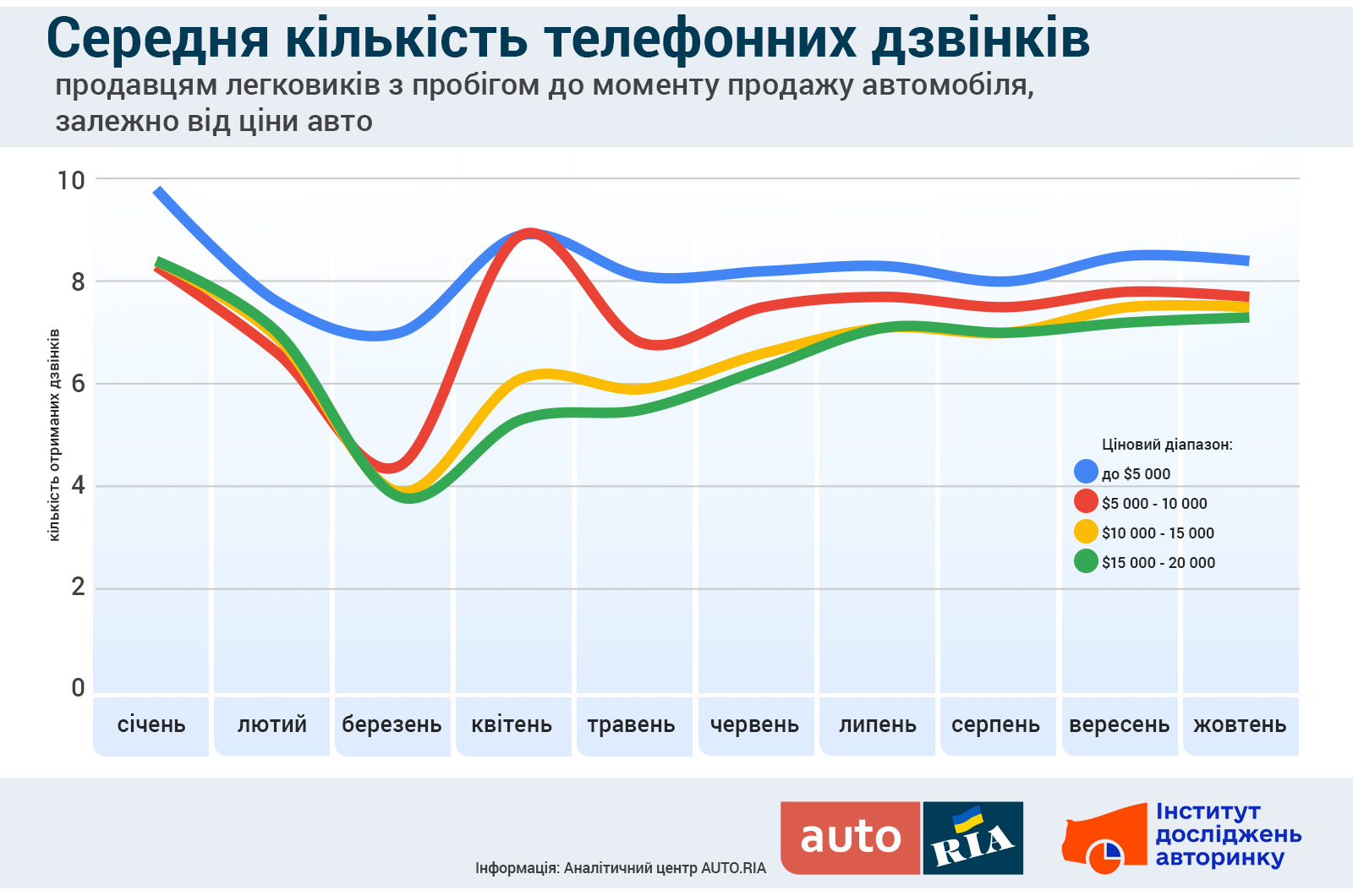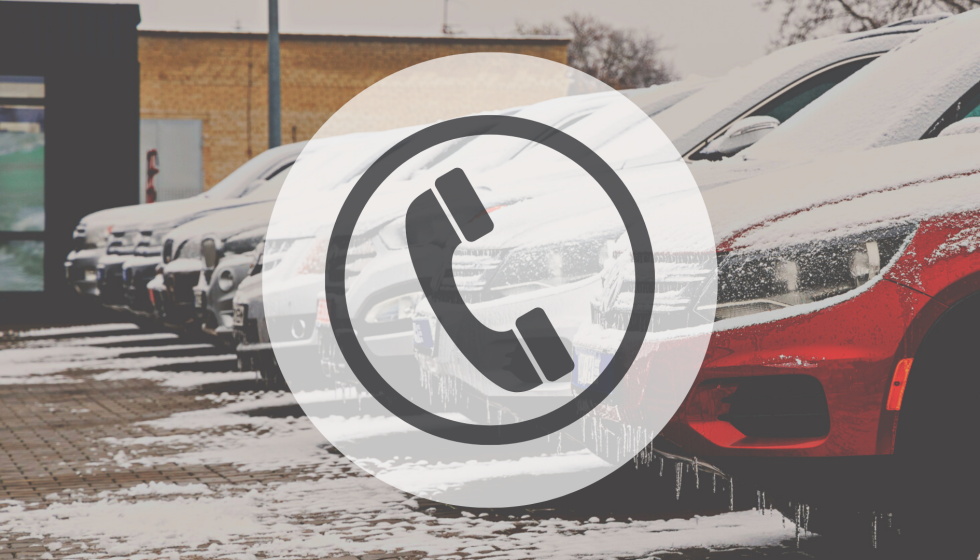Experts of the Institute of Car Market Research, together with AUTO.RIA, determined how the average number of calls for sales announcements for different groups of used cars with mileage changed in 2022, and what it depended on.
Every month in Ukraine, about 70,000 cars with mileage are sold on the domestic market, and since the beginning of 2022, more than 600,000 purchase and sale agreements have already been concluded. Most of these machines were sold on the Internet and, accordingly, communicated by phone. In order to estimate how many calls the owner receives on average before selling his car, experts from the Institute of Auto Market Research analyzed the statistics provided by AUTO.RIA.
The term "call" refers to the number of calls to the phone number (which is initially hidden) indicated by the seller in the ad for the sale of a passenger car with mileage posted on AUTO.RIA. When the owner deletes the offer with the mark "car sold" — we consider that a purchase and sale agreement has taken place, and we record the number of calls to the phone number before this event.
How does the number of calls depend on the age of the car?
At the beginning of 2022, for all offers, the average number of phone number openings was 8.8 times. By October, this value had decreased to 7.8. However, many events took place between January and October, and they had their impact on the behavior of buyers.

The diagram shows that the green curve (for 2016-2020 cars), which was higher than the others in January, noticeably "sagged" in March. For the "youngest" cars in the Ukrainian mass market, the average number of calls decreased to 4.7 — almost half the usual value. However, it is not difficult to explain: at the beginning of the war, there was not too much time for a long search, when a car was urgently needed. Thatʼs why they called less often, and bought, accordingly, faster. And when the car is conditionally "fresh", then it is easier to decide.
The blue curve, which shows the pickiness of buyers of cars from 2000 to 2005, "sagged" the least in March. Which also has its own reason: when the car is more than 17 years old, it is not so easy to choose an option that has no objections. And in general, buyers of this segment are forced to answer the largest number of calls until they exchange the car for money.
Overall, the number of calls to car dealers through October was almost flat across all age ranges, down to the recently mentioned figure of 7.8. Buyers have become less picky, while the contrasts that were most noticeable in the spring months have disappeared and diminished during the summer. The older the car, the more questions potential buyers have, the newer the car, the higher the chances of avoiding unnecessary conversations and proceeding to the conclusion of a sales contract.
How does the number of calls depend on the price of the car?
Even in crisis periods, sellers of the cheapest cars (range up to $5,000, blue curve) received more calls from potential buyers more often than owners of cars from the upper price segment of the Ukrainian mass market of used cars. This trend continues to this day: in January, they received an average of 9.8 calls, in October — 8.4.
Sellers of passenger cars in the price range of $15,000-20,000 have the fewest questions. At the beginning of the year, they were bothered by an average of 8.4 times before the sale, in the fall — already 7.3 times.

Separately, you should pay attention to the red curve, which shows the average number of phone number openings for cars priced from $5,000 to $10,000. At the beginning of March, apparently under the pressure of circumstances, buyers managed to decide in 4.4 calls. And already in April, their pickiness became higher than it was at the beginning of the year — to a value of 8.9 calls. However, then everything normalized and returned to a level close to the average in its segment.
Why could this happen? It is worth remembering how cars were bought in those days: evacuation, moving, going abroad — these were the main drivers that did not leave too much time for thinking. At that time, everything that could move independently, had documents, and, most importantly, was available "for yesterday" was really bought. There were fewer and fewer offers left on the market, of which even fewer were worthy of attention both in terms of condition and price. Accordingly, there were more calls, with a relatively smaller percentage of successful ones. We remind you that the range of $5-10 thousand is the most massive part of the Ukrainian car market, and that is why it reacts so noticeably to all external factors.
But when this panic wave began to subside little by little, "zero customs clearance" started in April, and the market began to recover in May. Then, as we can see in the diagram, gradually the average number of calls for each price range reached a "statistical plateau". However, with a decrease in the overall indicator from 8.7 in January to 7.7 in October.
Common to both studies, the dependence of the number of calls on the age of the car and its price, is that external factors have a direct impact on the market, namely on buyers. Under the pressure of certain circumstances in certain periods, they were forced to be determined more quickly. When urgency receded, buyers continued to ask questions of owners with the usual frequency. The newer and more expensive the car is, the fewer potential phone calls there are before the car is sold. With cheaper and older cars, the situation is the opposite. It is also worth noting that now Ukrainian buyers of used cars have learned to make decisions a little faster — at least one conditional call to the owner of a potential item of purchase.
Subscribe to the Telegram channel of the Auto Market Research Institute to be the first to receive information without advertising or spam.



